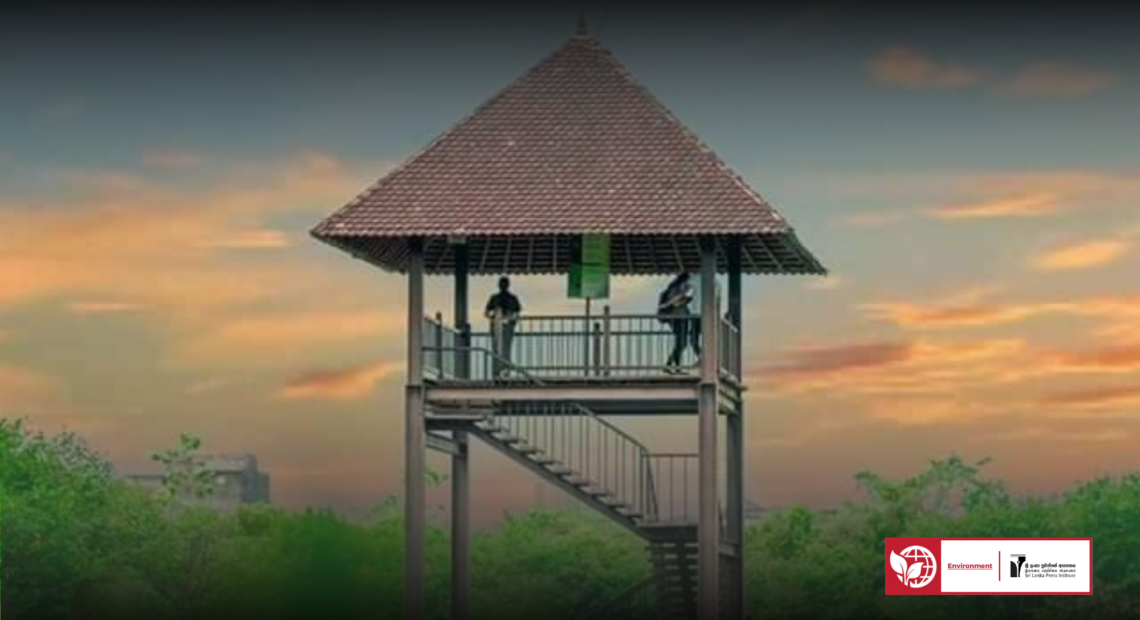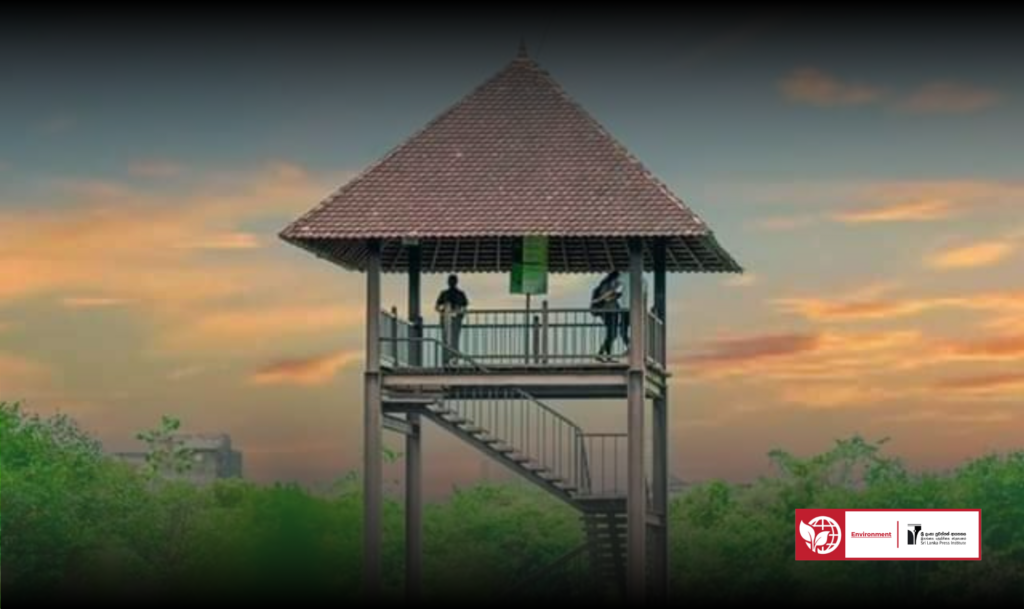
“The Beddagana wetlands, a place that compassionate people must preserve.”

The Beddagana Wetland Park, located in Kotte, the administrative capital of Sri Lanka, is a sensitive ecological zone rich in biodiversity, nestled amidst an urban environment filled with buildings. Covering approximately 40 acres, the Beddagana wetlands are home to several endemic and threatened species of plants and animals in Sri Lanka. The area has recorded 80 species of birds, 50 species of butterflies, 35 species of dragonflies, 20 species of fish, 10 species of reptiles, 5 species of amphibians, and around 100 species of plants.
During certain times of the year, the Beddagana wetlands also serve as a haven for migratory birds. It is a sanctuary for rare urban wildlife, including species like the fishing cat (Prionailurus viverrinus), seldom seen in urban environments.
Dr. Jagath Gunawardena, who is an environmentalist and a lawyer, says that “The Beddagana Wetland Park is part of the Beddagana section belonging to the Sri Jayawardenapura Sanctuary in Kotte. This area has historically been a wetland. However, when the Parliament complex was being built, some of the existing lake areas were filled with mud to expand the space. As a result, there was a large mudflat in the past, which attracted a significant number of birds. In 2014, work began to develop the Beddagana Wetland into a park as it exists today. Currently, the area represents an ecosystem in a transitional state, between a newly created environment and its natural state.”
The Urban Development Authority has designed the Beddagana Wetland Park in a way that preserves its natural beauty while making it a popular destination for both local and foreign visitors. The park features wooden walkways, an observation tower for birdwatching, and platforms that allow visitors to explore the wetland’s wildlife without disturbing the animals.
In addition to offering environmental services like reducing heat in Colombo and controlling floods, the wetland also plays a significant role in promoting environmental awareness and education. One of the main goals of the Beddagana Wetland Park is to highlight the importance of wetlands in conserving biodiversity and preventing environmental degradation while educating visitors about their value.”
The Beddagana Wetland Park is open to the public every day from 6:00 AM to 6:00 PM, with tickets issued only until 5:00 PM.
A significant challenge faced by the wetland is the rise in salinity levels in the Diyawanna Oya, affecting the population of fish and other aquatic species. The increased salinity has also led to the presence of crocodiles in the area.
The Beddagana Wetland Park is part of a larger wetland system, connected to other attractions in the region, such as Diyasaru Park and the Diyawanna Oya. Despite efforts by the authorities, irresponsible behavior by some individuals continues to pose problems for the overall ecosystem. Even though the municipal council sends garbage trucks to collect waste weekly, improper disposal along the roadsides near Diyawanna Oya and the Beddagana Wetland remains an ongoing issue. Authorities must take stronger action to halt these environmentally harmful practices. Preserving the park for future generations and protecting the natural habitats of the animals is also a responsibility of the public.
Residents of the Beddagana area, together with the Urban Development Authority and the Department of Wildlife, are already working towards conserving the wetlands. The “Wetland Clean Up” program held on October 6, 2024, is an excellent example of these efforts. During this event, waste dumped in and around the Beddagana Wetlands by people was removed, and the area was cleaned. The support from the local community was highly commendable.
The Beddagana Wetland Park is not just a place of natural beauty but also a symbol of urban conservation. It plays a vital role in positively impacting global warming and climate change by functioning as a valuable environmental system.
When visiting the park, avoid bringing non-biodegradable waste such as polythene and plastic. As you walk through the wetland, move quietly and calmly, so as not to disturb the animals. Protecting the Beddagana Wetland Park is a responsibility shared by all.
Captions for the photos
Birdwatching Tower
This is a prime spot for observing wetland birds and their daily behaviors. From here, visitors can enjoy a panoramic view of the entire park, offering a captivating perspective of the wetland ecosystem.
Garbage Bags along the Diyawanna Oya
On the route to the Beddagana Wetland Park, garbage bags can be seen discarded along the roadside near the banks of the Diyawanna Oya. This littering not only spoils the scenic beauty but also poses a threat to the local ecosystem.







